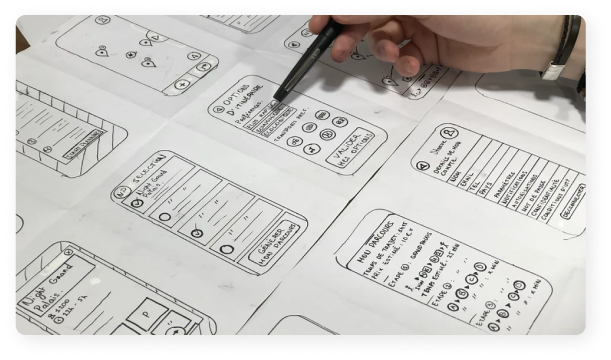

5 minute read
Why should Businesses must take the design-first development approach?
neetiraj | 2 November 2022
Creating a great user experience impacts the success of business in a big way. If your users can’t find what they need or can’t do something that they want to do, they won’t keep coming back. Design first development is an approach to software development that places design principles front and centre. Rather than starting with coding, developers use principles such as human-centric design to explore options, which uncovers the right user experience before production begins. This process ensures that the final product is not only useful but also appealing.
In this blog post, we’ll take a look at why businesses should invest in a design first development strategy as well as how it can help your business succeed.
What is design-first development approach?

The design first approach is a software development methodology that emphasises design principles, user insights, and quality assurance throughout the process. In other words, it’s a way of approaching software development that puts design as the top priority. This methodology starts with design and then builds out functionality. Instead of jumping straight into code, designers explore business problems and user needs, uncovering the right experience before production begins. This process not only produces appealing software but also ensures that the final product is useful to the intended audience.
How does a design-first development process work?
The design-first development process begins with user research. Before the team even thinks about how the product will function, they need to understand the people they’re building it for: Who will be using it, how, and why. This means conducting user research and interviews to discover what problems users need to solve, the goals they want to achieve, and the context in which they’ll use the product. To unearth this information, designers ask a wide range of questions, including:
- Why does this product exist?
- What is the problem it solves
- Who is the user?
- What does the user need
- What are the competing solutions available?
- How does the user interact with the product?
Who should be involved in this process?
The team that works on a design-first development approach will likely be different from one that uses a code first approach. Designers, product managers, and marketers become central to the process because they’re responsible for gathering user insights and generating early visuals and sketches. However, they need to work closely with the engineering team to ensure that the functionality and technical aspects are accurate.
The development team is responsible for building the product. Depending on your team structure, roles may vary, but developers should be involved throughout the entire process, just with a different focus. While designers are generating visuals and sketches, developers should be exploring the technical side and building an understanding of the functionality
What are the benefits of a design-driven approach?
Designers, marketers, and product managers have been shaping the user experience for decades. However, with the rise of agile development, code-driven approaches have become the norm. A code-first approach is particularly appealing to developers who need to see the product in action and have a sense of progress. Design-first approaches, however, provide a wider and more holistic view of the product, allowing for earlier insights into the user experience. When a team begins with design and then adds the technical aspects later, they have a better understanding of how the product will work. That means they can make better-informed decisions throughout the process, such as what features to include or how to set up the user experience.
A design first approach also gives teams more time to make changes. Since they’re not waiting for the code to be finalised, they can make adjustments as needed, even after the product has launched. The Three key benefits of “Design-driven approach” are:
- It creates a product vision and an informed roadmap
- Improve the quality of the product through user insights
- It provides an environment for continuous learning
How we ensure to deliver pure experience by taking the design-first development approach?
At Cocosto we take the design-first development approach to draw the roadmap for accurate implementation and development of softwares, web Applications and Mobile tools. We first understands the entire product journey and then design the interface by placing User centric design principles at the core. This process ensures the utility of the product and deliver results as expected for the business to grow and reach heights. The process we follow:
- Setup and Define User Goals
- Research and Analysis
- Fit Product in User’s Persona
- Sketch and Wireframe User flow
- Understand the Brand Guidelines
- Design User Interface
- Prototype & User testing
- Deliver User Experience
To make sure that the final product fits best with the desired user experience, we thoroughly research and test the product at all levels in the process and continually improve to deliver results.
To learn more, do visit: Cocosto Design Process


neetiraj | 2 November 2022
How Artificial Intelligence Will Shape Web Design & Development in the Future
Subscirbe to our newsletter!
Lorem Ipsum is simply dummy text of the printing and typesetting industry. Lorem Ipsum has been the industry's.